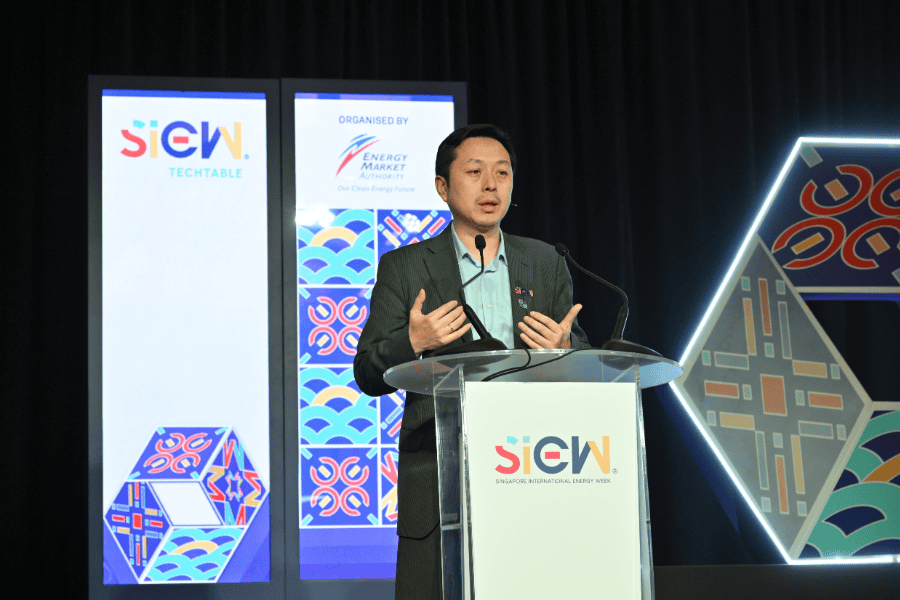Ammonia's role in the clean energy transition is expanding fast. At the SIEW TechTable on 'Unlocking Ammonia's Power in Decarbonisation', Stone Zhang, Vice President of Business Development, Amogy, shared how ammonia-to-power technologies are moving from proof-of-concept to large-scale deployment across Asia.

Projects in Korea, Japan, and Singapore reveal how innovation and collaboration are closing the gap between technology and implementation. They are turning ammonia's promise into practical progress for some of Asia's hardest-to-abate sectors.
From prototype to scale
Amogy's presentation demonstrated that ammonia-to-power technology is no longer confined to the laboratory. Across Asia, real-world projects are proving the fuel's potential to decarbonise heavy transport, power generation, and industrial systems.
Over the past five years, the company has advanced from small pilot systems of 5 kilowatt (kW) to a 1 megawatt (MW) power unit. These real-world demonstrations show that ammonia-to-power is both technically viable and ready to scale. By converting ammonia into clean energy, Amogy's systems can power heavy transport, shipping, and other energy-intensive uses without carbon emissions.
Innovation in compact design
Amogy's catalyst technology enables ammonia to be converted into hydrogen at lower temperatures and higher efficiency. This makes power systems smaller, safer, and easier to integrate across transport and maritime applications. By addressing challenges of size and complexity, the innovation helps position ammonia as a practical clean fuel for everyday use.
Commercial projects across Asia
Amogy's partnerships across the region are translating ammonia-to-power innovation into practical applications. In South Korea, the company's collaboration on a 40 MW power plant in Pohang City will supply cleaner energy for heavy industries working to meet global carbon standards.
In Japan, Amogy contributes catalyst technology to the country's first industrial-scale ammonia cracking demonstration. The project is led by JGC Holdings Corporation and the New Energy and Industrial Technology Development Organization (NEDO).
In the maritime sector, the company's collaboration with Samsung Heavy Industries aims to replace diesel auxiliary engines. This marks an early step towards zero-emissions shipping.
Singapore as a Living Lab

Singapore is emerging as a strategic testing ground and deployment hub for ammonia-to-power technologies. Mr Zhang shared that Amogy has signed a Memorandum of Understanding with the Agency for Science, Technology and Research (A*STAR). Supported by the Economic Development Board (EDB) and Energy Market Authority (EMA), the partnership will establish an ammonia-to-power testbed on Jurong Island.
The initiative strengthens Singapore’s role as a regional testbed for low-carbon fuels. It also demonstrates how innovation partnerships can advance cleaner maritime energy solutions.
In a fireside chat with Claire Perry O'Neill, Former Minister for Energy and Clean Growth in the U.K., Zhang explained ammonia's advantages: It's easier to transport and store than pure hydrogen, and it contains no carbon molecule.
The progress that Mr Zhang shared at SIEW TechTable reflects a wider truth across the energy transition. Successful projects in Korea, Japan, and Singapore show how collaboration between policy, industry, and innovation can turn ideas into systems.
As Asia advances its net-zero ambitions, regional collaborations built around ammonia-to-power technologies will be critical to progress. Innovations like Amogy's can help turn those ambitions into practical, scalable outcomes.
Stay tuned as the conversation evolves throughout the day. Follow @SIEW_sg on Telegram and X (formerly Twitter) for the latest insights.